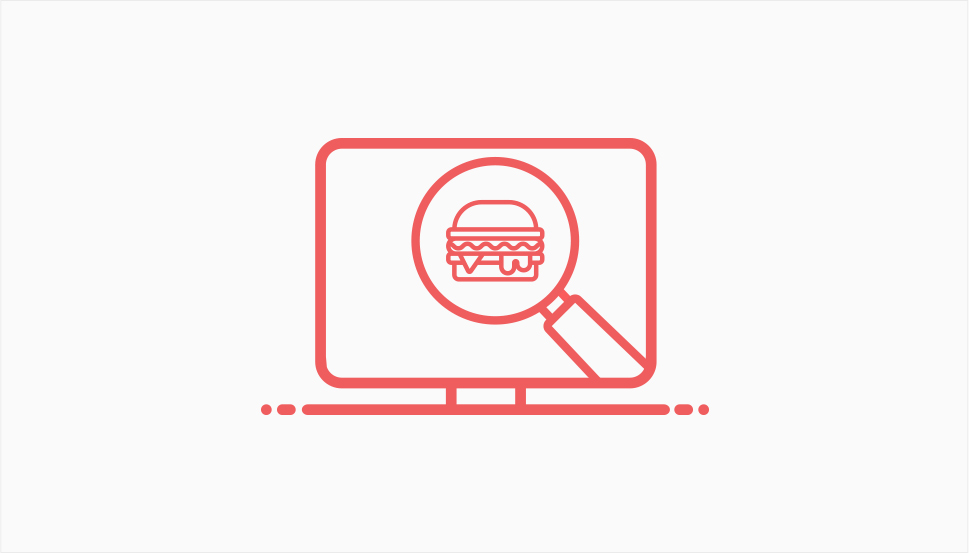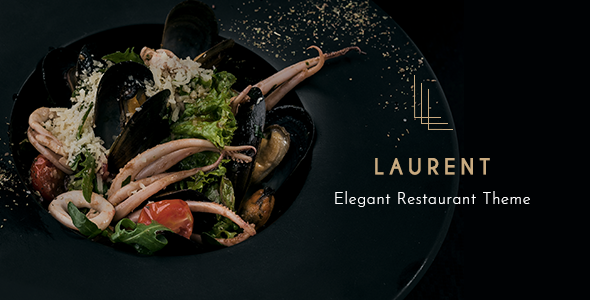How to Start a Food Blog in 2024

Everybody has to eat, right? Right. But though you could subsist on plain rice and beans, chances are that‘s not how you choose to eat. In fact, virtually everybody who has a choice will have a varied diet, for reasons ranging from health, to politics, to just plain hedonism. This is also why nearly everyone has an opinion on food and diet, and why there is no shortage of food blogs. Still, however many food blogs there are, new ones keep popping up.
That‘s hardly surprising, food being the universal topic it is. It ties into health, ethics, aesthetics, politics, sustainability and the environment, tradition, culture high and low – there is no end to angles from which to approach food. And if you are reading this, we guess you, too, have an angle in mind, and are looking to start a food blog yourself.
You have come to the right place. Here‘s what we‘ll be discussing:

To start a blog, you need a website. That much is obvious. You will also need some kind of software to run your website. If you are here, chances are you’ve opted for WordPress. With WordPress, anyone can make a professional, feature-rich website, with minimum effort, no coding knowledge, and some few clever choices of theme and plugins. But we’ll get to that later.
A website, in any case, needs hosting and a domain name.
Hosting is basically server space for all your content. The choice of host is entirely up to you, but we do have some tips on how to choose a hosting provider.
You will also need to register a domain name. A hosting provider will often offer domain registration as part of the package. If you are not sure what a domain name is or how to register it, we have an article offering in-depth explanation of domain names and registration.

Having sorted out your hosting and domain name situation, you need to install the WordPress software. To do that, you need a web browser (which you likely already have, if you are reading this), an FTP client (there are many free FTP clients to choose from), and a database access tool (which you will likely get as part of a hosting package deal).
Next, you need to download a copy of WordPress, install it on your server, and connect it to your database. We won‘t go into the details here, as this isn‘t specific to food blogs – it works just the same with any website. You can read our step-by-step guide to installing WordPress, or watch our handy video-tutorial:
The installation of WordPress takes about as long as the above video. Even a novice will be done with it within minutes.

The thing you need to decide next (or rather, the thing you have probably decided first) is what kind of food blog you want to run. Broadly speaking, there are two kinds of food blogs: recipe blogs and review blogs. The direction in which you wish to take your blog can affect your choice of theme – your website‘s basic layout.
Recipe blogs are dedicated to teaching people how to cook. They primarily post recipes and possibly other kitchen tips (how to clean and maintain a kitchen and equipment, how to stock a non-perishables cupboard, and so on). These can be all-text, but most modern websites add images and video to the instructions.
Review blogs are different altogether. They primarily post reviews of restaurants, fast food chains, products such as cookware and supplies, cookbooks, or possibly YouTube cooking channels, and so on. Review websites are a niche of their own, mind, and we have a tutorial dedicated to getting started with a review website.
Before selecting a theme, you need to decide which kind of blog you‘re running, as you will need different functionalities.

In building a website meant to last, you need to be consistent: pick an approach and stick to it. Classical French cooking? Sustainably sourced produce? Nose-to-tail minimum waste cooking? Your grandma’s old recipe book? It doesn’t matter a great deal which niche you pick, as they are all likely to have an audience, but you need to build your style consistently. That way, your audience will learn what sort of content they can expect from you.
You can approach food from any number of angles, but if you do your research (i. e. check out what other people are doing) you will notice some regularities.
The first one that comes to mind for us is the formatting of recipes. These usually fall into one of two categories: they are either super-concise and to the point, or start with a long-winded introduction before even mentioning the ingredients and basic prep. If you have ever wondered why you need to read somebody’s childhood story or a history lesson before you get to the nuts and bolts, there is a reason: SEO.
Simply put, very short posts have very little worth when driving visitors to your website is concerned. If you wish to adopt the short and sweet approach, you’ll have to do more work in terms of optimizing your content for search engines.
Another thing is the presence of graphics, specifically photos. If you are running a recipe how-to blog, your visitors will appreciate knowing what their food is supposed to look like every step of the way, rather than simply reading a recipe. This goes especially for novice home cooks. You could go an extra step and provide your readers with original art, charts, and other graphics if you are so inclined. But not every food blog will be an instructional.
If you are, say, running a cookbook review blog, the graphics become less important. Still, you will need to give your readers some insight into what the book you’re reviewing looks like: a title page, a page from the mid-section of the book, or even your own take on a finished dish. In any case, you will likely be hosting image content as well. And, even with the best practices for image optimization in place, that means you need to take server space, but, more importantly, graphics and video functionalities into account.

Building a site with WordPress requires a theme: a basic template you use to organize and present your content. There are free themes and themes which will make an impact on your budget, but you do need one, and, while each theme has some basic functionalities (such as pages, posts, menus, and so on), they will vary greatly in additional functionalities, layouts, look and feel.
We eat with our eyes first, so it‘s fairly safe to assume a recipe or instructional blog will be heavy on the visuals. This does not mean that review blogs don‘t need pictures – in some ways they might even need them more then recipe blogs – but that visitors will expect different things.
Another useful feature is video, in case you wish to primarily present your recipes as such. Again, we see this as less important for review websites.
There is no shortage of beautiful, professionally designed themes dedicated to food blogs. But if none of them is quite your style, or if you are working on a tight budget, you can use plugins to achieve some of the same effects.
The important thing you need to consider is legibility, and possibly not the kind that immediately comes to mind. A majority (4 out of 5) most popular search engines use a shared meta-language to distinguish between types of content. In other words, you need to make sure search engines know your posts are in fact recipes or reviews. Some themes will have this functionality built in, but many will require a plugin. Ideally, a specialized food blog theme will have the requisite functionality.
But say that, for whatever reason (budget, aesthetics, other functionalities) you have decided on a theme which doesn’t provide you with a custom post type for recipes or reviews. Don’t fret: you can still fix that with a plugin.

Plugins are software which works alongside a theme, giving it additional functionalities. Depending on the kind of food blog you are running, you need to make your recipes or reviews look the part to both the human user and the search engines.
There are plugins specifically designed for creating recipes, making it easy for search engines to distinguish them from other content by emphasizing recipe-specific data such as ingredients lists, prep and cooking times, methods, cost of supplies, and other. This also means that search engine users will have more to go on when deciding whether to click on your link or not when choosing from among the results.
Besides that, a recipe or a review can simply be a post, which is a default feature of any WordPress theme. And we have a great tutorial for you on how to create blog posts.
If you are running a review blog, though, you can‘t go wrong with WP Product Review Lite.
This plugin will help you create easy-to-read reviews within minutes. Simply create a special post type, select the criteria on which you wish to rate the subject of your writing (restaurant, product, cookbook), and generate summarized reviews, complete with pro and con feature lists and an average grade.

Gone are the days when research was done in libraries, leafing through musty volumes, or peering at microfiches. These days, your first stop should be a search engine. Simply googling anything will likely give you the answer you want, but you can always refine your searches with Google operators. But Google isn‘t the only place to look for inspiration or instructions.
There is a great wealth of recipes on YouTube, too, from professionally filmed and edited programmes, to amateurs showing off. Reddit and other message boards can be of great use to you, too, with tips, tricks and personal opinions and experiences.
Oh, and remember those musty old volumes? Don‘t discard them completely! We bet, for nearly every old cookbook, there is at least one good story (1960s jello salads? Ancient Roman diet tips? Obsolete food safety standards?), and who knows how many people interested in finding it out.

There is no surefire way to success – if there were, everybody would be doing things the same way. Still, there are things you need to consider in order to draw more visitors to your website.
The first thing you need is quality content, but that only goes so far.
An internet user will likely use a search engine to find the content they want. This means you should optimize your content for search engines. This is a whole line of work for some very clever specialists, and there‘s no way all that is to be known about SEO can fit into any kind of tutorial, but you really should get acquainted with SEO basics.
Another new way of content proliferation is social media. You can draw attention to your content by building a social media presence and interacting with social media users. Visually-centred social media networks such as Instagram, Pinterest and TikTok could be great avenues to new website visitors. Pick a network you wish to establish a presence on and promote your identity. If that sounds too easy, that‘s because it is. We have a whole tutorial on social media promotion alone.
Finally, consider email marketing. This is a possibly underappreciated tool, but, depending on the content of your website, maybe your visitors would like a monthly recipe which they can easily share, or a featured eatery of the week. You can use email marketing to easily reach a great number of people, and to gather data on your visitors – who they are and what kind of content they like. But this is just scratching the surface – there’s so much more to learn about email marketing.

So, you‘ve established a website, you‘ve given it your all, and you‘re off the ground, with satisfied visitors flocking to your rich, juicy, spicy and sweet content. But is there a way to make money from a food blog?
Well, if you are running a recipe blog, you could start selling recipe books. After all, you already have the content. You can bundle your recipes by theme and organize them into different collections, and maybe add some exclusive recipes which aren‘t on your website. Ebook or print? Your choice, but you should know the latter is much more of an investment.
You should also consider ads. If you have a substantial amount of traffic, you should consider using parts of your website for ads. You could add Google Adsense to your website, or you could consider installing an ad management plugin, but be careful not to overwhelm your visitors: ads are incredibly unpopular. If they are unobtrusive, though, your visitors won‘t mind.
If you are running a review blog, you could consider paid reviews. Reach out to restaurants or cookbook publishers, and offer to review their services and products for money. If you have a good reputation among your visitors, your opinion and analysis will carry a lot of weight.
Finally, you could join an affiliate marketing program. Whether you are publishing recipes or reviews, you can add affiliate links to products or services you are writing about in order to earn a commission in case somebody makes a sale thanks to you.
In Conclusion
WordPress‘s main idea is that anyone should be able to create a website, and WordPress is a powerful tool in that respect. But creating the best imaginable website is only the beginning. Growing any kind of website takes time and effort, competition is fierce, and there are no guarantees, especially in such a rich and subjective a field as food. Nevertheless, we hope we have provided you with the ingredients for a solid food blog, no matter your angle or style. It‘s up to you to get cooking.



